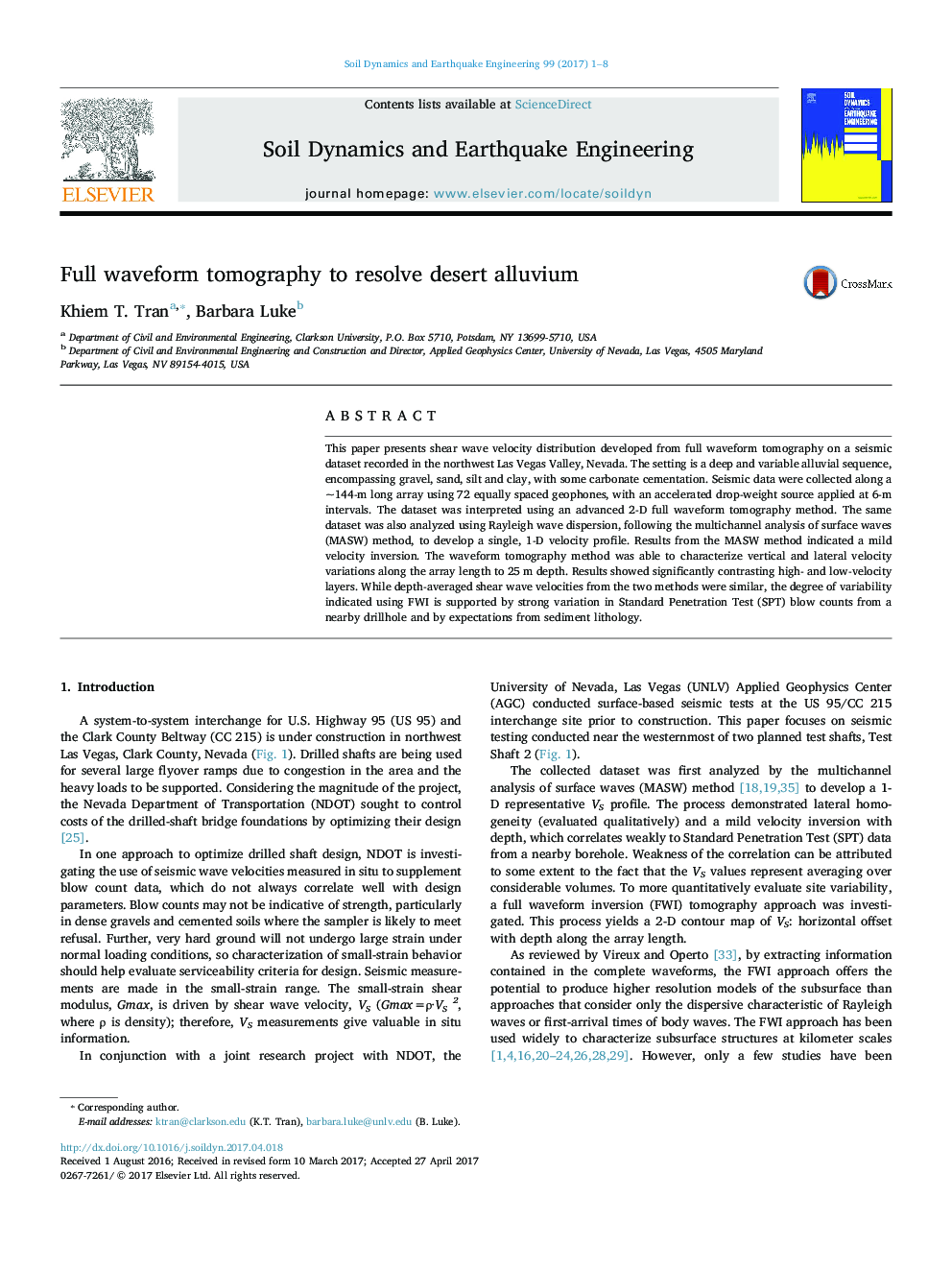| Article ID | Journal | Published Year | Pages | File Type |
|---|---|---|---|---|
| 4927209 | Soil Dynamics and Earthquake Engineering | 2017 | 8 Pages |
Abstract
This paper presents shear wave velocity distribution developed from full waveform tomography on a seismic dataset recorded in the northwest Las Vegas Valley, Nevada. The setting is a deep and variable alluvial sequence, encompassing gravel, sand, silt and clay, with some carbonate cementation. Seismic data were collected along a ~144-m long array using 72 equally spaced geophones, with an accelerated drop-weight source applied at 6-m intervals. The dataset was interpreted using an advanced 2-D full waveform tomography method. The same dataset was also analyzed using Rayleigh wave dispersion, following the multichannel analysis of surface waves (MASW) method, to develop a single, 1-D velocity profile. Results from the MASW method indicated a mild velocity inversion. The waveform tomography method was able to characterize vertical and lateral velocity variations along the array length to 25Â m depth. Results showed significantly contrasting high- and low-velocity layers. While depth-averaged shear wave velocities from the two methods were similar, the degree of variability indicated using FWI is supported by strong variation in Standard Penetration Test (SPT) blow counts from a nearby drillhole and by expectations from sediment lithology.
Related Topics
Physical Sciences and Engineering
Earth and Planetary Sciences
Geotechnical Engineering and Engineering Geology
Authors
Khiem T. Tran, Barbara Luke,
